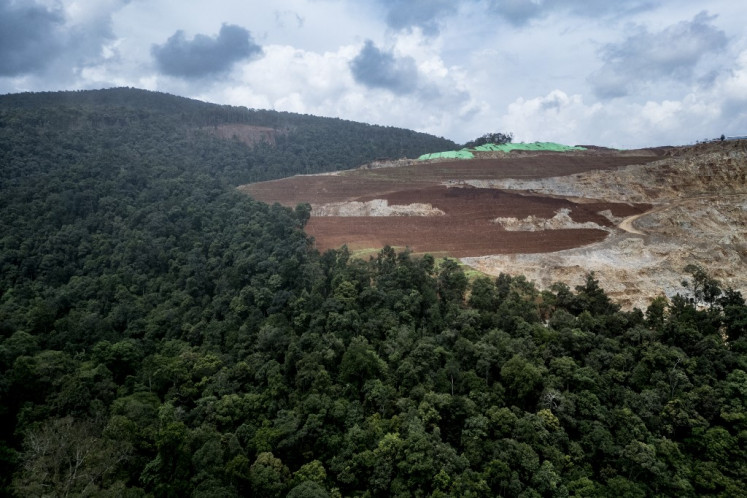Popular Reads
Top Results
Can't find what you're looking for?
View all search resultsPopular Reads
Top Results
Can't find what you're looking for?
View all search resultsPalm oil production increased by 18 percent in 2017: Palm oil association
Change text size
Gift Premium Articles
to Anyone
P
alm oil production in 2017 increased by 18 percent from the previous year, thanks to weather patterns that were conducive to high productivity, according to the Indonesian Palm Oil Producers Association (Gapki).
"Good rainfall throughout 2017 helped increase our productivity because of the La Nina (wet climate pattern)," said Gapki secretary-general Togar Sitanggang in a press briefing in Jakarta on Tuesday.
He revealed that total production of palm oil, including palm kernel oil, increased to 42 million tons from 35.6 million tons in 2016.
Palm oil exports (CPO and its derivatives) also increased by 23 percent from the previous year in both volume and percentage amid global criticism against the impact of palm oil production on the environment, particularly in terms of deforestation.
The volume export, which brought in US$22.9 million, was recorded at 31 million tons last year.
"It was the highest figure we had ever achieved in the history of Indonesian palm oil exports," he said, adding that exports to India and African countries increased by 32 and 50 percent year-on-year, respectively.
"Even exports to Europe increased by 15 percent from 4.37 million tons in 2016 to 5.03 million tons in 2017," he said.
Palm oil stock in 2017 stood at 4.02 million tons, while the average CPO price in 2017 was recorded at $714.3 per metric ton, 2 percent higher than the US$ 700.4 per metric ton recorded in the previous year. (srs/bbn)










